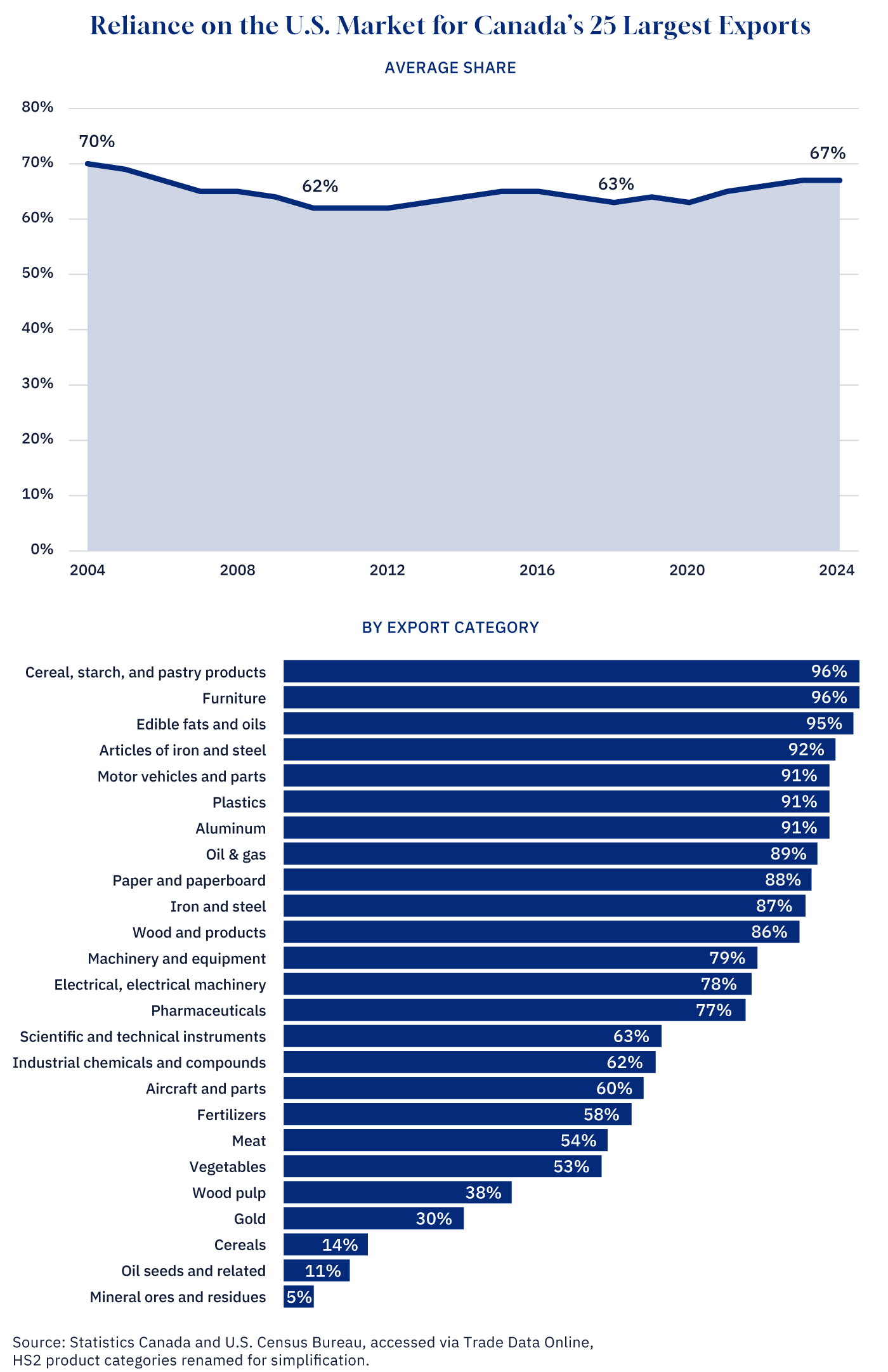In each EconMinute, Business Council of Alberta economist Alicia Planincic seeks to better understand the economic issues that matter to Canadians: from business competitiveness to housing affordability to living standards and our country’s lack of productivity growth. She strives to answer burning questions, tackle misconceptions, and uncover what’s really going on in the Canadian economy.
Trade diversification may be a hot topic, but it’s far from new. The idea that Canada shouldn’t rely so heavily on a single buyer has been around for years. And, as the federal trade minister recently pointed out, the government has had a diversification strategy in place since 2016.
But has Canada made any progress on that front? Based on the latest data (through 2024), Canada is as dependent on the U.S. as ever. Americans buy around three-quarters of what Canada sells internationally, roughly the same as it has for the last 20 years.

Graphic credit: Janice Nelson.
It’s not just a single commodity like crude oil skewing the numbers, either. For 17 of Canada’s top 25 export product categories, the U.S. accounted for more than 60 percent of international sales last year. And for eight of those, the U.S. made up over 90 percent of exports. In fact, there are only five product types where the U.S. is less than 40 percent of the global market for Canadian exporters—primarily mining- and agriculture-related products.
And that’s been the case for decades. This concentration is pretty much unchanged from 20 years ago. Overall, Canada’s top exports count on the U.S. for 67 percent of global sales today, down only slightly from 70 percent a couple of decades back.
But it’s worth noting that there have been a couple of diversification success stories. Two of Canada’s biggest exports—raw mineral ores (mostly iron), and gold—not only saw the most diversification of any major export, but also the fastest growth. Sales for these exports are now six times what they were in 2004, largely thanks to non-U.S. markets. The shift has been especially stark for mineral ores, which now rely on the U.S. for no more than 5 percent of their sales—down from 24 percent twenty years ago.
Nonetheless, Canada remains extremely dependent on the U.S. market for sales and growth. And even though talk of diversification has been around for years, our economy remains firmly hitched to America’s.
A version of this post was originally published by the Business Council of Alberta at businesscouncilab.com.









